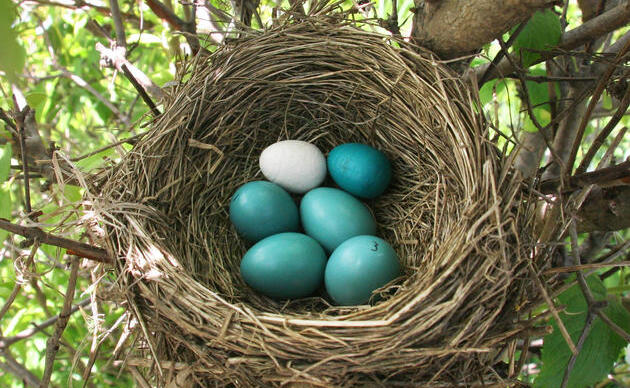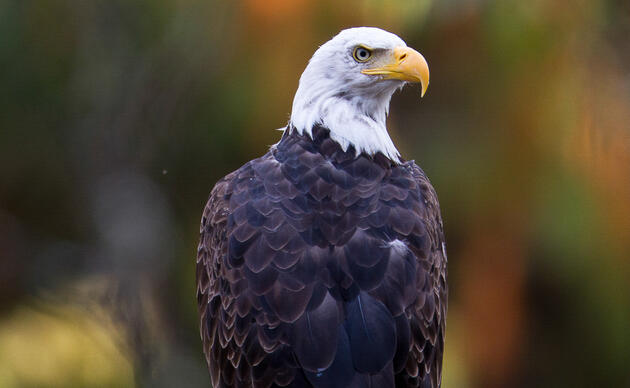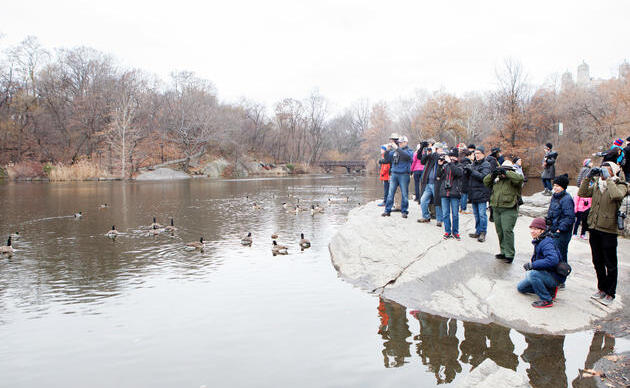BirdSafe Buildings
The work we are doing with Project BirdSafe to understand and quantify the problem of bird-building collisions has lead to important action such as our ongoing Lights Out program.
BIRD-SAFE BUILDING GUIDELINES
View/download a PDF of the Guidelines (3.7 MB):
To increase awareness of bird safety in the architecture and planning community, we worked with a Perkins + Will architect and other partners to create the Bird-Safe Building Guidelines. This in-depth, 40-page publication serves as an important first step in promoting understanding and adoption of bird-safe strategies for new and existing buildings in Minnesota. Those who design and operate buildings are perfectly positioned to make choices that create a better future for our birds and for our community.
The Guidelines detail the reasons birds collide with buildings and offer best practices in the design and retrofit of all structures – from landscaping to lighting to glass choices – to reduce their impact on birds.
Funding for the Guidelines was provided by TogetherGreen and the Katherine B. Andersen Fund of the St. Paul Foundation. New York City Audubon provided the catalyst for this project by allowing us to use their 2007 Guidelines as a base for this updated and revised version.
FREQUENTLY ASKED QUESTIONS
What are the main reasons birds hit buildings?
Birds have two basic problems with buildings: One relates to lighting, the other to glass. Lighting is an attractant – especially for migrating birds who often fly at night. Brightly lit buildings can draw birds in where they can hit windows or other obstacles. Glass is a problem because it is confusing for birds as an invisible obstacle and as a reflective surface. Birds use the habitat and airspace around buildings as they forage and migrate. They fly into glass that reflects the habitat or the sky or try to fly through glass when they can see habitat or sky on the other side. As a rule, collisions occur just about anywhere birds and glass coexist and collisions increase 19% for every 10% increase in glass area.
What kinds of buildings are most dangerous for birds?
Buildings that have both extensive glass and attractive habitat are the most dangerous for birds. Other features such as skyways or passageways, mirroring and bright lighting can cause additional problems. However, we find birds at a huge variety of buildings from beautifully landscaped glassy corporate complexes to unlit buildings in the heart of downtown Minneapolis and St. Paul. As more architects and designers become aware of this problem and take action to prevent it, new and innovative solutions will become available.
What can be done?
There are many aspects of a building’s design and layout that can contribute to bird collisions. Designers and architects who are aware of these factors can use creative techniques and materials to reduce or eliminate collisions. These choices are best incorporated into the original design of a building. Retrofitting a building that proves to be a problem is more difficult with fewer options and choices that may not be consistent with the overall vision for the building.
What are the key components of bird-safe design?
From a design perspective, aspects of a building’s layout, landscaping, lighting design and exterior envelope may all contribute to its direct impact on birds through collisions. Key design choices include lighting design and operations and the use and extent of exterior glass.
Is bird-safe design part of LEED®?
The LEED system is the US Green Building Council’s nationally accepted standard of sustainability for the commercial, residential and institutional building industries. Provisions related to bird safety are included in the newest version of LEED v3 (2009). Currently points are awarded for bird-safety as part of the Innovation and Design (ID) category. However, since pertinent solutions fall in many traditional design categories, LEED points may fulfill bird-safety needs at the same time as they fill needs for sustainability and efficiency in other categories.
Is bird-safe design required by law?
While all native birds are protected by law there are still many sources of mortality such as window collisions that are simply overlooked. This issue is getting more regional and international attention and specific design criteria are required in a few communities. The City of Toronto has new requirements for bird-safe design. Cook County, IL has also passed a bird-safety ordinance. Here in Minnesota, we have a state law requiring all state-owned and leased buildings to adhere to “Lights Out” parameters to benefit migrating birds and save energy. And Federal legislation has been proposed requiring bird-safe design for federal buildings.
Is bird-safe design part of ‘building green’?
Interestingly, as we expand our use of “green” design, the use of glass has increased. Green design often also includes landscape enhancements around buildings including water features and the addition of native plantings. The combined effect of glass and attractive habitat can make green buildings even more deadly to birds as they are drawn in close to the glass and cannot see it as an obstacle in their path. Building green has typically focused on energy efficiency, sustainable materials and resource conservation. Advocating bird-safety in buildings should also be integral to the green building movement.



